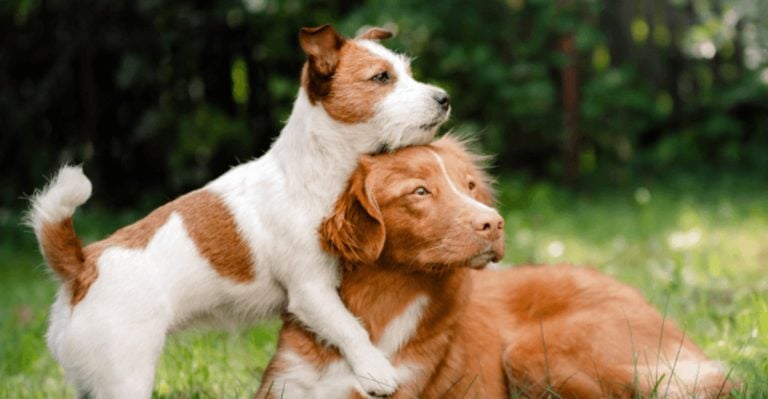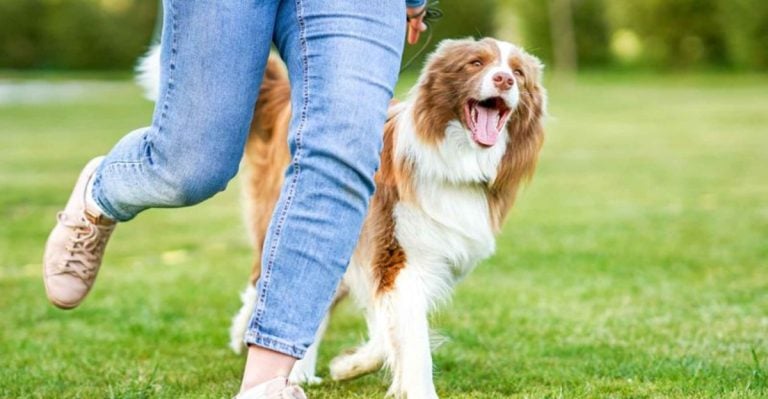Labradoodle or Goldendoodle? Here’s How to Pick the Right Doodle for You
Choosing between a Labradoodle and a Goldendoodle might seem like splitting hairs—literally—but these two curly-coated companions have more differences than most people realize.
Both are beloved for their intelligence, friendliness, and those irresistibly fluffy faces, but each doodle brings its own unique flair to the table.
Whether you’re looking for a playful running buddy or a mellow cuddle machine, knowing their key differences can help you find your perfect match.
Sure, they share a Poodle parent, but that other half—Labrador Retriever vs. Golden Retriever—makes all the difference.
From energy levels and trainability to coat texture and temperament, their distinct personalities start to show the moment you bring one home.
And while both breeds are wildly popular with families, allergy sufferers, and dog lovers of all ages, each one fits a slightly different lifestyle.
Some people are drawn to the Labradoodle’s go-getter spirit and athletic build. Others fall head over heels for the Goldendoodle’s gentle eyes and people-pleasing personality.
Even their coats—though often mistaken for being the same—require different levels of maintenance depending on the genetics at play.
So, which one is right for you? Is the loyal, driven Labradoodle more your speed, or does the sweet, social Goldendoodle steal your heart?
To help you decide, we’re breaking down the 13 traits that set them apart—so you can make a confident, informed choice before welcoming your next furry family member.
1. Parentage Origins
Labradoodles emerge from the crossbreeding of Labrador Retrievers and Poodles. This fusion contributes to their varied personalities and appearances. On the flip side, Goldendoodles come from Golden Retrievers and Poodles.
This pairing brings its own flair of charm and elegance. The parentage profoundly influences aspects, from temperament to coat texture. Each lineage offers a different heritage and set of traits.
While both result in endearing and intelligent dogs, the blend of genes provides a distinct foundation for what each breed has to offer. The uniqueness of their backgrounds can make deciding between the two breeds an adventure in itself.
The origins define not just their appearance but hint at the potential personality traits they may exhibit. Understanding these roots can assist potential owners in making a fitting choice.
2. Temperament
Goldendoodles tend to be affectionate and love being around people and other animals. Their social nature often makes them the life of the party.
Labradoodles, however, may display a more independent streak, driven by their Labrador ancestors’ working instincts. While both breeds are friendly and social, Labradoodles can sometimes show a bit more energy and enthusiasm for tasks.
The difference in temperament can suit various lifestyle preferences. For those wanting a companion that eagerly snuggles, a Goldendoodle might be ideal.
Meanwhile, a Labradoodle could appeal to someone looking for a dog with a little more spunk and spirited involvement.
Temperament plays a critical role in deciding which breed resonates more with your personal lifestyle and family dynamics.
3. Energy Levels
Labradoodles are often bursting with energy, ready to take on any adventure thrown their way. Their lively nature makes them perfect for active families who enjoy outdoor activities.
Contrastingly, Goldendoodles typically have a more laid-back approach to life. They appreciate a good romp but are equally content with a relaxed afternoon by your side.
The difference in energy levels can influence your daily routines and exercise plans. While a Labradoodle might keep you on your toes with its zest, a Goldendoodle offers a more balanced energy, perfect for those leisurely moments.
Evaluating their energy tendencies can help potential owners align a dog’s activity needs with their own lifestyle. It’s important to consider how much activity you can accommodate.
4. Trainability
Both breeds are known for their intelligence, which makes them highly trainable.
However, Labradoodles often excel in learning tasks and commands swiftly, driven by their Labrador working-dog heritage. Their eagerness to engage in productive activities can be a delight for those who enjoy training sessions.
Goldendoodles, though equally intelligent, may occasionally be sidetracked by affection and social interactions. Their willingness to please their owners is heartfelt and genuine.
Yet, they might need slightly more patience and consistency during training.
Understanding these nuances can help dog owners tailor their training approaches accordingly. The varied trainability levels offer a chance to experience different teaching dynamics with each breed, ensuring rewarding interactions and growth.
5. Coat Texture
Goldendoodle coats are often admired for their silky waves, which give them a majestic appearance. Their coat texture can vary slightly but generally leans towards a wavy, soft feel.
On the other hand, Labradoodles sport a more diverse range of coat styles—from curly to fleece-like, adding an element of surprise.
The coat’s texture not only affects appearance but also influences grooming routines. For those who prefer softer, wavier coats, a Goldendoodle might be the preferred choice.
Conversely, a Labradoodle’s coat can offer variety, appealing to those who enjoy uniqueness in texture. Each coat type presents its own grooming challenges and charms.
The texture is an essential aspect to consider for maintenance and aesthetic preferences.
6. Coat Color Range
Labradoodles showcase a palette that includes chocolate, black, and cream, reflecting their Labrador roots. These colors can create a striking visual appeal, with each shade offering its own charm.
Goldendoodles, however, often exhibit golden, apricot, and red hues, echoing their Golden Retriever lineage. The vibrant colors can enhance their warm and friendly appearance.
The choice of color could be a delightful decision for potential owners. Each shade carries its own personality and style, making the selection process engaging.
Whether drawn to the rich tones of a Labradoodle or the sunny shades of a Goldendoodle, color adds an extra layer of individuality. These colors can be a significant factor in choosing a dog that fits your aesthetic preferences.
7. Hypoallergenic Qualities
While neither breed is completely hypoallergenic, Labradoodles, especially those bred over multiple generations, are often noted for their reduced shedding.
This makes them a popular choice for allergy sufferers seeking a loving canine companion.
In contrast, Goldendoodles, though generally low-shedding, might not have the same level of hypoallergenic features. Their fluffy coats can sometimes release more dander, which may affect those sensitive to allergens.
The hypoallergenic qualities of each breed can be a deciding factor for families concerned about allergies. Understanding these differences can lead to a more informed decision on which breed might suit your household best.
The promise of fewer allergens can indeed be a comforting thought for potential dog owners.
8. Size Variability
Both breeds offer a delightful range in sizes, from toy and mini to standard.
However, Labradoodles tend to have a more stocky and muscular build, especially evident in the standard size category. This robust physique can be appealing to those looking for a sturdy companion.
Goldendoodles, while also variable in size, may appear slightly more refined in their proportions. Size can significantly influence a potential owner’s decision, impacting living arrangements and transportability.
Whether seeking a compact companion or a larger, more imposing presence, both breeds cater to diverse preferences.
Each size category has its own charms and challenges, allowing for a tailored choice in finding the perfect furry friend. The size variability offers flexibility for varied lifestyles.
9. Facial Features
Goldendoodles often capture hearts with their soft, rounded faces, reminiscent of their Golden Retriever heritage. This gentle appearance complements their friendly demeanor. Labradoodles, conversely, may sport more angular and athletic facial features.
Their defined look gives them an air of intelligence and alertness. The diversity in facial structures offers potential owners the luxury of choice.
Whether drawn to the softer look of a Goldendoodle or the athletic allure of a Labradoodle, each breed brings its own visual appeal.
Features influence not just first impressions but also the perceived personality of the dog. This aspect can play a role in forming a connection with the dog, based on the face they’ll see every day.
10. Social Personality
Goldendoodles are renowned for being social butterflies, often reveling in the company of strangers and other dogs.
Their outgoing personality makes them great companions for those who appreciate a dog that’s always ready to make new friends.
Labradoodles, on the other hand, might exhibit a tad more reservation initially. They often take their time to warm up, reflecting a more discerning nature. This difference in social behavior can align with different owner preferences.
While a Goldendoodle brings an immediate dose of friendliness, a Labradoodle’s cautious approach can be equally endearing.
Understanding their social tendencies helps in choosing a breed that aligns with one’s social activity level and personal comfort with a dog’s interaction style.
11. Water Love
Labradoodles often inherit their love for water from their Labrador ancestors, showing a natural affinity for swimming and water play. This makes them ideal for families who enjoy water-related activities and adventures.
Goldendoodles, while they might appreciate a good splash, do not universally exhibit the same passion for water.
Their level of enthusiasm can vary greatly among individuals. The love for water can be a decisive factor for families who frequently engage in water-based recreation.
Labradoodles tend to be more adventurous in this regard, offering a playful water companion. This trait can add an extra layer of excitement and bonding for those who live near water or enjoy aquatic activities.
12. Common Health Concerns
Both breeds may inherit health issues from their parent breeds, which is an important consideration for potential owners. Labradoodles are often prone to hip dysplasia and eye problems, conditions that require vigilant monitoring and care.
Goldendoodles, on the other hand, might face heart issues and skin allergies. Being aware of these common health concerns helps in making informed decisions regarding insurance, regular check-ups, and preventive care.
Understanding potential health challenges allows for better preparedness in managing them should they arise. This knowledge ensures a proactive approach to the well-being and happiness of the dog, fostering a healthier, happier life together.
Both breeds have specific needs that must be acknowledged by any prospective owner.
13. Grooming Needs
Goldendoodles require frequent brushing to prevent matting in their wavy coats, making regular grooming a necessity. Their luscious locks demand attention, adding to their regal appearance but also to the grooming workload.
Labradoodles, particularly those with wirier coats, may need less frequent grooming but require thorough sessions to keep them looking neat.
This difference in grooming needs can influence the time and effort owners are willing to invest in their pets.
For those who enjoy the grooming process, a Goldendoodle might be the beautician’s dream. Alternatively, a Labradoodle offers a slightly more low-maintenance option.
Choosing between the two can depend largely on a potential owner’s lifestyle and grooming preferences.



















